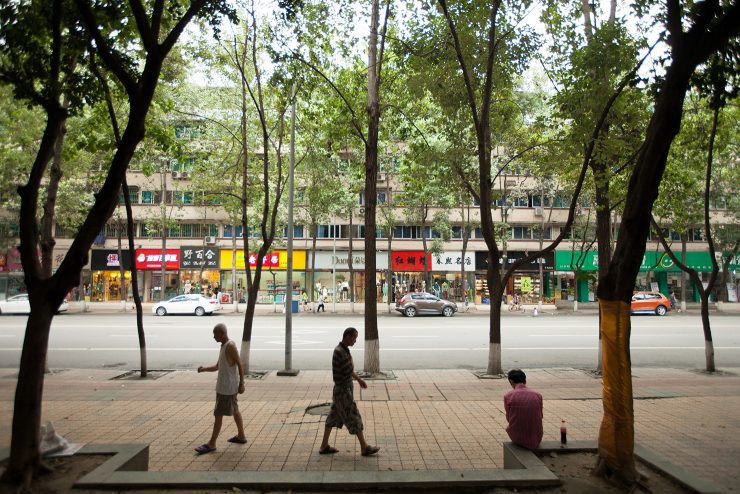
In a first for our globe-spanning Build Outs of Summer series, we take you to Chengdu, China, home to a new cafe owned and operated by our friends & partners at Five Elephant Coffee of Berlin. In our ever-shrinking coffee world, the 4,597 miles (that’s 7,398 kilometers) between Berlin and Chengdu presents more opportunities than problems, and the opportunity to do business in Chengdu—”a small city” with 25 million inhabitants—offers a huge new potential pool of converts to the wonders of delicious coffee. To call this country an “emerging coffee market’ would be an enormous understatement, and here in Chengdu, Five Elephant has the intriguing ability to carve out a niche for their increasingly global brand.
We learned more about the project from Five Elephant co-owner Kris Schackman, writing in from somewhere between Berlin and Chengdu.
As told to Sprudge by Kris Schackman.
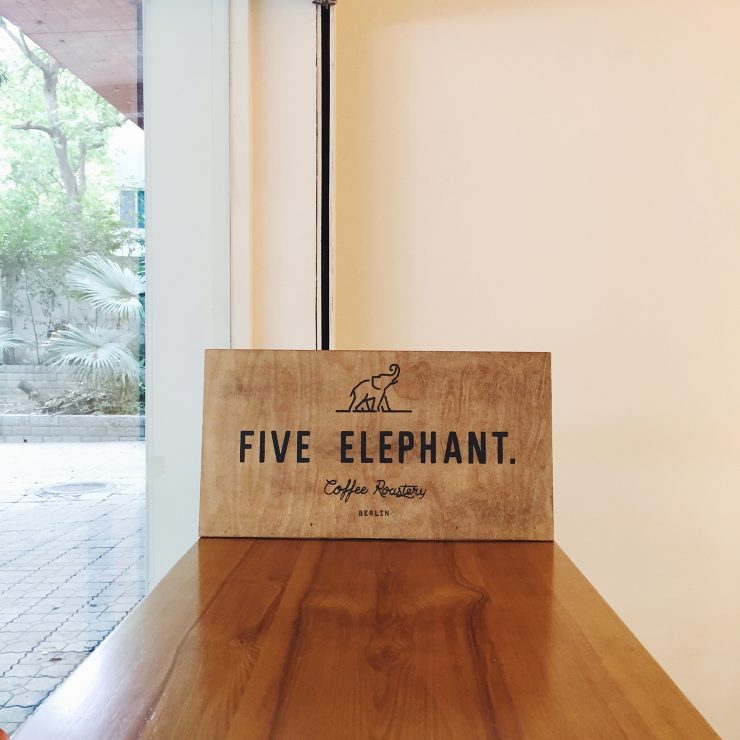
For those who aren’t familiar, will you tell us about your company?
Five Elephant is a coffee roastery and cake bakery located in the Kreuzberg area of Berlin, Germany. Since 2010 we have been roasting coffee and baking cake. My now wife Sophie Schackman (formally Weigensamer) and I (Kris Schackman) had met a few years before opening the shop and both came from working in film and media. We knew we wanted to open a shop and make things we thought tasted good. The idea was that it would be a place where people could come and try what they could then take home with them.
In 2014, we moved our roastery from our cafe, into a larger industrial space around the corner and upgraded from a 5kg to a CR-25 Diedrich. We had been selling our coffee in small amounts to various countries around the world fairly early on, but when we moved to a larger, more consistent machine, we were able to expand our wholesale operations to serve regular wholesale and retail customers all over the world.
At the heart of our business is the fact that we have been as much of a cake shop as a coffee shop, and in some respects are more well-known locally for our cheesecake (among other cakes).
We are excited this year to open 2 new shops. This first in China and the second back in Berlin later this fall.
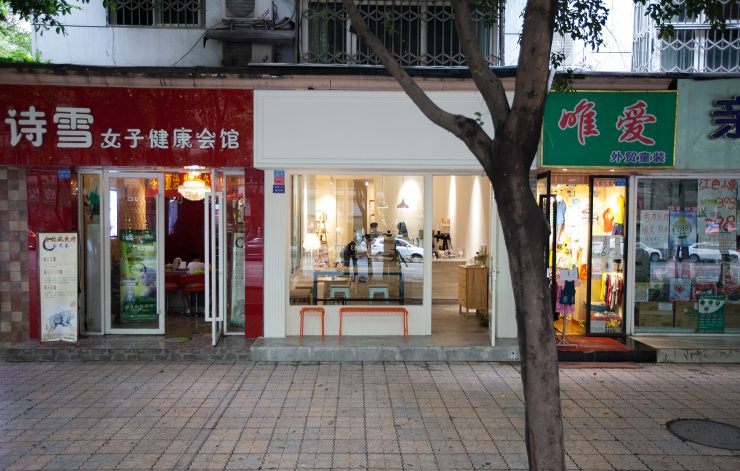
Can you tell us a bit about the new space? We’re curious as to why you’ve picked China for an expansion, and the city of Chengdu specifically.
We have been working in China for about 2 years now, starting with a cooperation with La Marzocco China at the Hotelex Conference in Shanghai. It was clear that we wanted to work more in China and saw a general enthusiasm for the Chinese people to embrace what we were doing. When we started thinking about where and what kind of space to open first, we initially thought about roasting in China. After some concerns about maintaining quality, we decided to focus more on opening a retail shop where we could base our wholesale efforts with coffee that we roast in Germany.
For our first location we wanted to be close to our managing partners’ home in Chengdu, a small city with 25,000,000 people in its greater metropolitan area.
The city of Chengdu is relatively off the map for specialty coffee in China, but had a few “Coffee Studios”, which in China are mostly in residential or non-commercial buildings. Since it was important for us to have a commercial space, we looked at first into building out in international office building lobbies.
In the end we decided to open a stand alone shop in the Chenghua District of Chengdu, which is the eastern central area where you still see the traditional local cultural of Chengdu. The cafe is located at Shiang Qiao Road No. 151. Shuan Qiao Road is a long street with lots of small local restaurants and clothing shops.
It was important for us to find a location that was close enough to downtown and easily accessible by public transportation. The cafe is a short to the Da Ci and Wen Shu Temples and the People Park, which are heavily visited by tourists.
Since this is a City that we will visit often, I also liked the idea of being close to the more natural landscape of the Minshan mountain range. For those of you not familiar with this area, it is where the Giant Pandas, the Leshan Giant Buddha and one of the 4 sacred Buddhist mountains, Mount Emei (a UNESCO World Heritage Site covered in elephant statues and dedicated to Samantabhadra) are located.
The reagion can be quite beautiful and a bit easier to visit for more extended periods of time, compared to the more industrial areas closer to the sea in China.
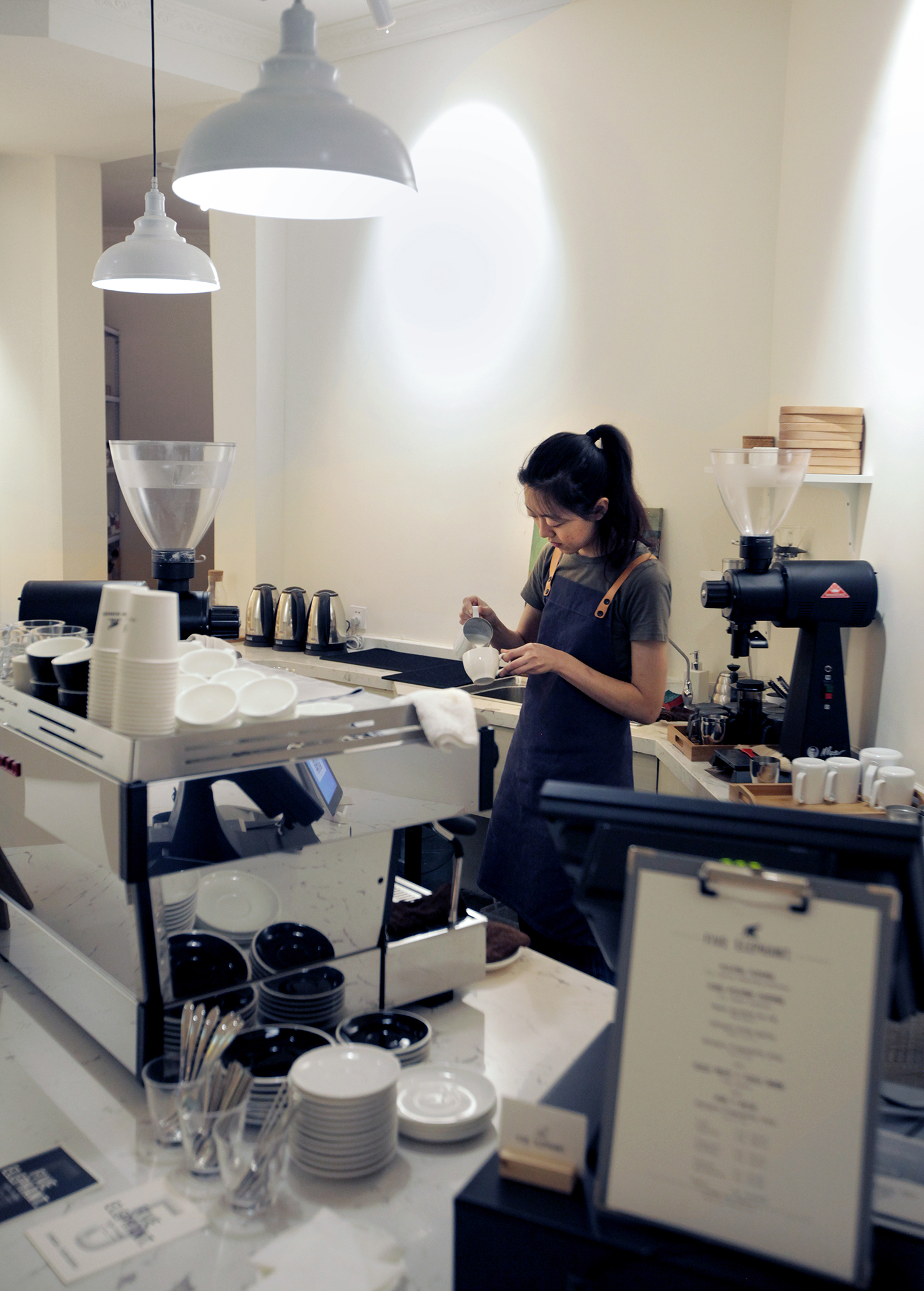
Tell us more about how you’re laying out the bar in this cafe.
The idea was to use the small footprint to create an intimate a personal experience with coffee. We wanted a big front window, like the one we have in Berlin so that people can have a nice view to sit and people could also see clearly what we do inside. It is inviting to see people sitting enjoying a coffee in a window anywhere you are.
The bar is first presented to you when you walk in and it was important for this place that you see the La Marzocco when you look in from outside. The tables are made from pear wood, which was not something I was so familiar with. The color and tone of the wood is lighter than the oak we use in Berlin, but we also wanted something a bit different.
We also wanted some small seats for people to have a quick coffee. We found some nice cork benches for this and it adds a slightly worn look, to the otherwise clean wood of the tables.
At our bar is an area for “slow filter coffee” which is how they call it in China. Here there are also places to interact with guests and explain our brewed coffee and retail, which is directly next to the counter.
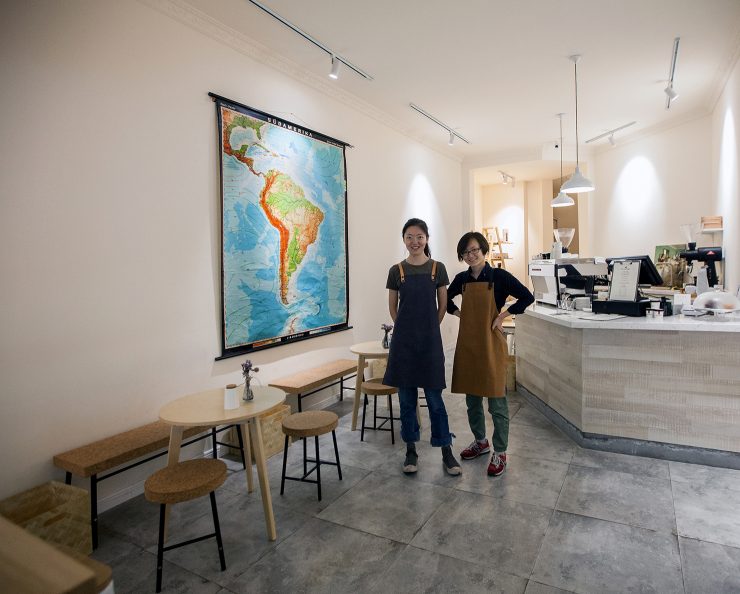
What’s your approach to coffee?
The long story?
About 6 months after we opened our roastery in 2010, I had started to look into working more closely at origin. Around that time I had heard from our designer Sebastian Amberger, at Sunst-Studio, that Cory Andreen (World Cup Tasting Champion 2012), who I had met initially when he was still DJ’ing the year before, thought our coffee roasting was alright, but our “green beans were shit”. In a way that pushed me to try and source better coffee with a goal to get better.
We also started roasting as people/companies like Tim Wendelboe, Coffee Collective and Square Mile were just getting into the international pulse. The access to their coffee in Berlin, right as we were informing our own identity to roasting, helped shape our ideas about what we wanted from our coffee.
I had also grown up in Massachusetts and had this already formed idea about a more bolder and fuller developed coffee. So in a way we combined some ideas, which was also helpful in establishing us in the German market. We have some minor variations along the way with our roast approach, but today we are roasting much like how we were in 2011-2012 (when we first started working with the green bean distributor Nordic Approach and getting truly phenomenal green). The main difference between then and now is that now we have a lot more control over our process and have a much more well defined idea about why we are roasting (i.e. for specific methods of brewing/extractions).
We also started working about 5 years ago with some producing partners directly. Fazenda Ambiental Fortaleza in Brazil was our first (and still our longest producing partnership). We worked directly with exporters in Kenya and Costa Rica fairly early on and this was important in setting us apart in Germany before anyone was really doing this here. Going to origin and buying from producers was something that felt normal to me, since Gorilla Coffee in Brooklyn (my neighbourhood cafe) had photos of their origin trips as early as 2004 on their counter. It was certainly an inspiration for us as we started to understand the business of coffee and decide how we wanted to work.
As for roasting, we have slightly bastardized the ideas of Scott Rao, adapting them to work on high quality green beans, which allow for a lighter degree of development and roast. What this allows us to do, is roast a coffee that we feel is more evenly roasted and capable of being extracted quite high or low without introducing roast notes or grassy cereal. It is not a perfect science and of course we do have fluctuations where our ideas don’t work as well as we want. We are only human in the end and coffee is a personal enjoyment so open for an infinite amount of interpretation.
Our thought is that if we can roast for a clearly defined area of extraction and make the tolerance higher for what tastes good, when its not perfectly brewed, then we have succeeded. We all get frustrated when we work with a coffee that is just impossible to extract and sometimes it can be a fine line. I do admit that we can skirt this line with some particular coffees, but its only when there is something exceptional about a certain harder to extract range that we find extraordinary. Exceptionally tasty coffee is what we are after and what keeps us going.
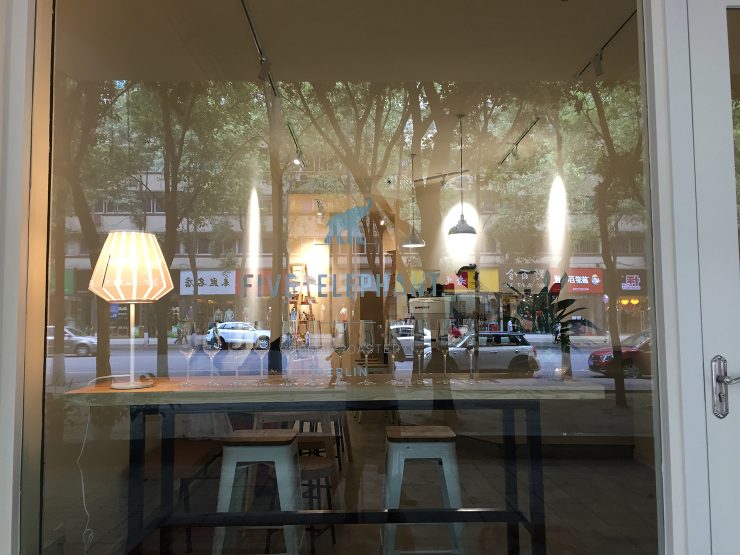
Tell us specifically about the gear you’re using in China.
We have installed a 2 group La Marzocco Linea PB and are using only the Mahlkonig EK43 grinder with our Volumetric Doser for espresso and filter brews. It was our goal to work volumetrically and there is no better set up to do that with than this we feel.
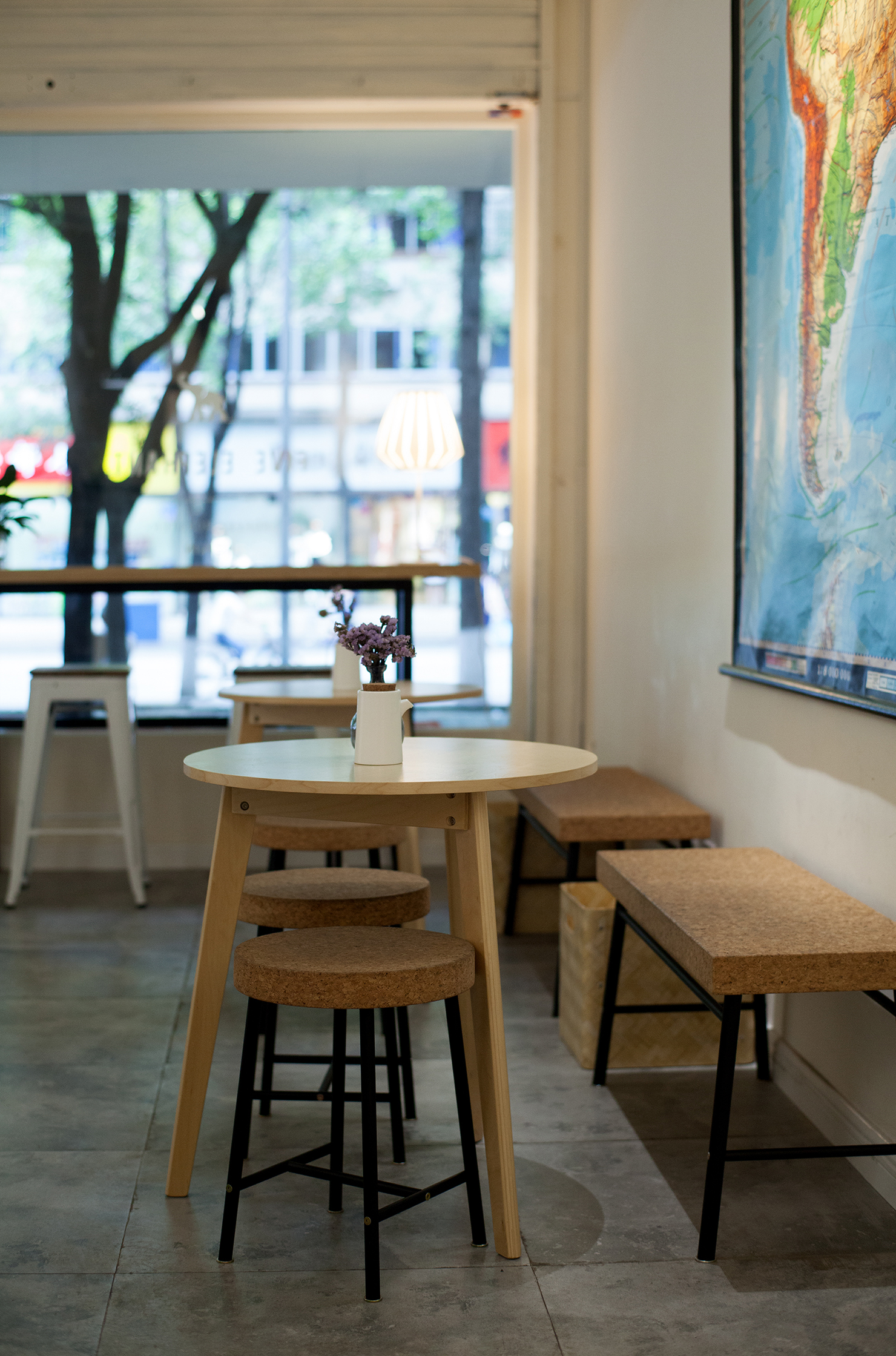
What’s your hopeful target opening date/month?
The official opening party is Saturday the 23rd of July! Although the shop has been open already for a few weeks to work out the kinks.
Are you working with craftspeople, architects, and/or creatives that you’d like to mention?
Our main partner Naza Tai has been instrumental in coordinating the crafts people in renovating this shop. It was quite run down when we took it over and it needed a complete overhaul which she was able to mange quickly. As always our logo design and retail branding is overseen by the design firm Sunst-Studio, who somehow have a hand in everything we do, whether directly or indirectly.
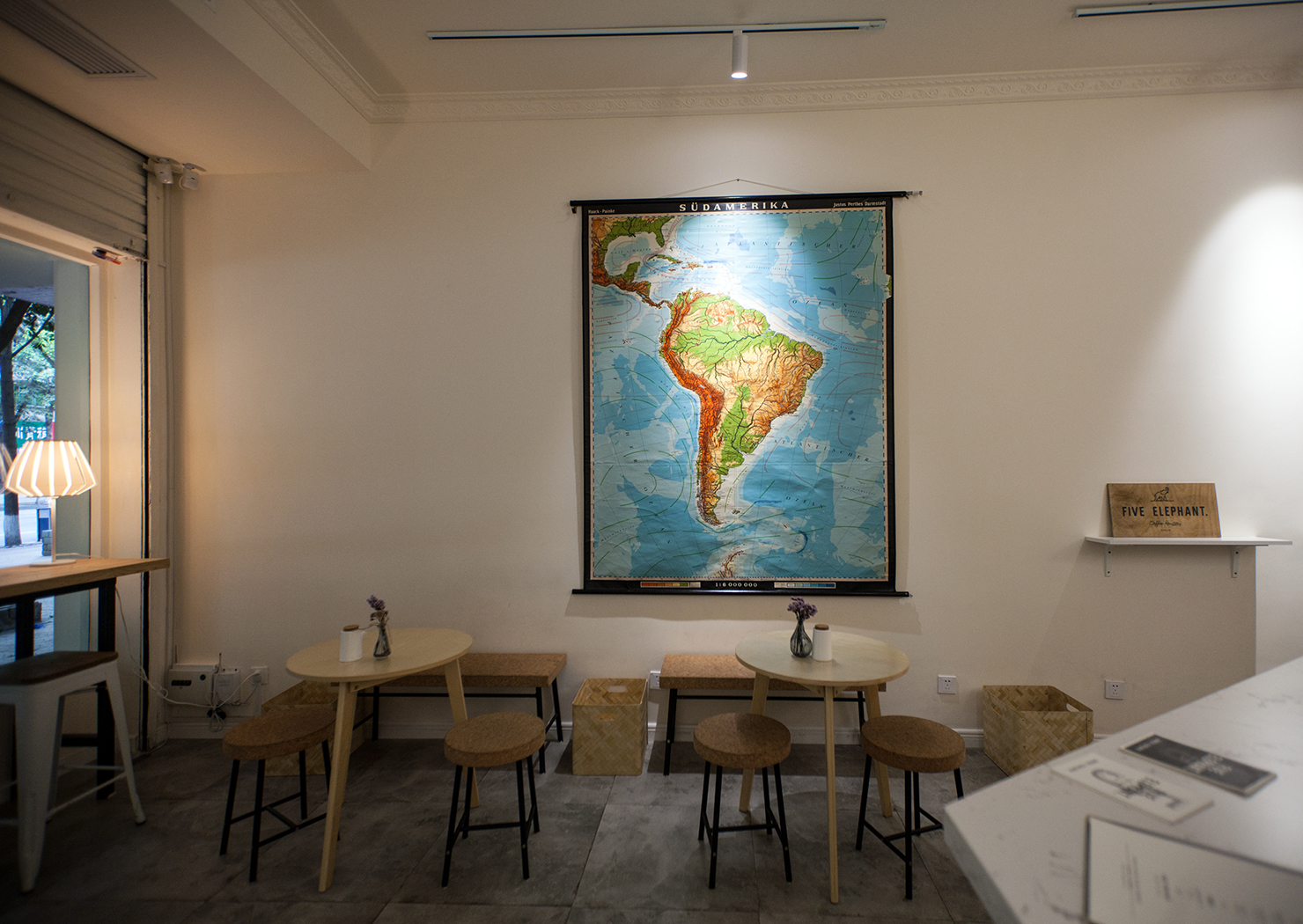
What’s the address?
Shiang Qiao Road No. 151, Chenghua District, Chengdu, China
Follow Five Elephant China on Weibo at FiveElephant_Coffee, on Wechat at FiveElephantCoffee and on Instagram @fiveelephant.china
Photos courtesy Five Elephant.
The post Build-Outs of Summer: Five Elephant Coffee In Chengdu, China appeared first on Sprudge.

